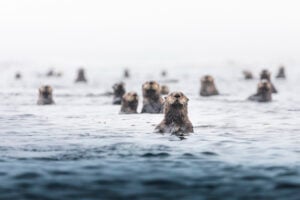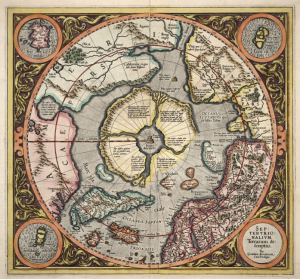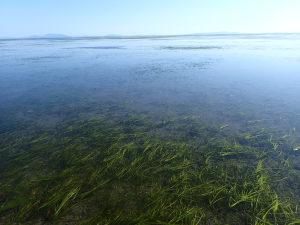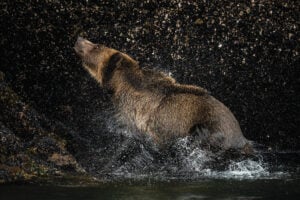
Wildlife
The otter, the urchin and the Haida
As the sea otter begins its long-overdue return to Haida Gwaii, careful plans are being laid to welcome them — and to preserve a prosperous shellfish harvest
- 3015 words
- 13 minutes
Travel
A seashelling sojourn on these quiet Florida Gulf islands is a balm for winter- and COVID-weary travellers

Palm fronds sway gently in the breeze as I take in the tropical sunset over the Gulf of Mexico. A snowy egret puffs up her feathers and struts on yellow feet into the shallow Gulf to dive for minnows. The humid air is a salve to my brittle winter skin. As the golden sphere of the sun sinks below the horizon, I watch transfixed as jagged coral and teal lines streak the sky.
The moment seems to go on forever and suddenly my imagination, dulled by months of COVID monotony, fear and dread, is alive with possibilities.
By the time the sun has fully set at 6 p.m., I am almost in tears. I have only been on Sanibel, 40 kilometres from Fort Myers International Airport across a beautiful causeway, for six hours, but I am transformed.
If travel could put you into a state of grace pre-pandemic, getting away from home after two years of COVID lockdown feels surreal.

With travel restrictions slowly lifting, Canadian tourists are returning to Florida. While many snowbirds favour Fort Lauderdale, Miami or West Palm Beach, Sanibel and neighbouring Captiva Island offer a very different kind of holiday.
Low-impact ordinances mean there are no traffic or street lights, chain stores, or buildings taller than the highest palm.
If you’re looking for a laid-back, nature-loving paradise, these islands, with their dense mangroves and sugar sand beaches, are the place to be. Captiva is even more intimate and secluded, with signs warning you to watch for low-flying owls and bicycles and golf carts — the preferred mode of transportation down the island’s single main street.
Make no mistake, however: there is a lot to do here, including boating; cycling (almost all roads on both islands have bike paths); paddle boarding; kayaking; fishing.
And – shelling. Sanibel and Captiva are the number one place in the U.S. to collect shells, and one of three top destinations in the world, thanks to their location. The islands are perpendicular to the mainland which means the ocean currents flush the water downwards, bringing in much treasure.
Lest you scorn such an activity, I am here to tell you that it can quickly become a competitive obsession – or simply a time to let your mind wander. Bucket and sieve in hand, I stoop for hours, wading out past the first wrack line and sifting through broken shells and sand until I find a fighting conch, a delicate lion’s paw and two intact sand dollars. (Note: Removing live shells is illegal.)

For the best shelling, you can take a boat tour to the uninhabited island of Cayo Costa north of Captiva, with 14 kilometres of secluded beaches and 971 hectares of preserved nature. I hop on a motorized catamaran out of Captiva’s quaint McCarthy’s Marina, across the blissful Pine Island Sound. Two bottlenose dolphins soon join us, dancing in the water, and then riding the wake behind our boat.
We sail past deserted North Captiva Island and reach Cayo Costa, pulling up at a secluded wooden dock. After a short tromp through the mangroves we arrive at an empty beach. None of the six passengers bother to swim; all eyes are on the ocean floor.
The boat’s captain, Ben Pfaff, a retired lawyer, tells me: “My wife will kill me if I take home more shells.” He is one of more than two dozen relocated mid-westerners I meet who came to Florida for a new life (and many more who came to escape COVID).
“I never regretted moving here. I am so glad to be out of the rat race,” he says.
Anne Morros Lindbergh, wife of Charles Lindbergh, stayed on Captiva Island many years ago, and wrote about the inspiration of nature to help women in mid-life find peace, contentment and solitude. “How to remain whole in the midst of the distractions of life; how to remain balanced, no matter what centrifugal forces tend to pull one off center…” reads an essay from her 1955 book, Gift from the Sea. “What is the answer? There is no easy answer, no complete answer. I have only clues, shells from the sea.”
Sanibel’s JN “Ding” Darling National Wildlife Reserve, named after a political cartoonist and conservationist, is a 3,100-hectare mangrove forest. You can walk, bike or drive through. During my one-hour visit, I saw an alligator sunning in the shallows, an anhinga bird with wings like piano keys spanning more than three feet, white pelicans, a blue heron, as well as several osprey nests atop trees. Visit the eco-themed gift shop and the colourful restrooms with their murals and animals (it was voted the nicest bathroom in the U.S.).
Tiny Matlacha Island (about an hour from Sanibel) forms a bridge from the Florida mainland to Pine Island. This old-timey Florida fishing village has a distinctly bohemian vibe. Brightly painted tropical shops sell sculpture, art, jewelry and other quirky objets d’art; there are waterside restaurants and seafood markets. Rent a kayak from Gulf Coast Kayak and explore the mangrove islets in the Great Calusa Blueway, a paddling trail that goes through Pine Island Sound to Estero Bay.
Sanibel’s Song of the Sea Resort is a comfortable, beachfront, family-friendly hotel and pool that has a naturalist on staff to show guests turtle tracks on the beach and share information about how to plant mangrove propagules. Mangroves provide crucial habitat for marine life, protect coastal communities from flooding and also reduce shoreline erosion.
Sanibel’s Lighthouse Café, its walls appropriately decorated with photographs of lighthouses, boasts the best breakfast in the world. I have never had a better omelet than the Hungry Fisherman, with crab, shrimp, scallop and alfredo sauce, which the owner says they have been serving for more than three decades.
On Captiva, take in a fantastic sunset at the Mucky Duck, looking out on the Gulf of Mexico while sipping a cold beer and sampling shrimp bisque, oysters or fresh fish. Very casual, and popular with locals, so come early.
Are you passionate about Canadian geography?
You can support Canadian Geographic in 3 ways:

Wildlife
As the sea otter begins its long-overdue return to Haida Gwaii, careful plans are being laid to welcome them — and to preserve a prosperous shellfish harvest

People & Culture
In this essay, noted geologist and geophysicist Fred Roots explores the significance of the symbolic point at the top of the world. He submitted it to Canadian Geographic just before his death in October 2016 at age 93.

Environment
Collaborative research is uncovering the secrets of coastal seagrass beds to help keep them healthy

Wildlife
Salmon runs are failing and grizzlies seem to be on the move in the islands between mainland B.C. and northern Vancouver Island. What’s going on in the Broughton Archipelago?